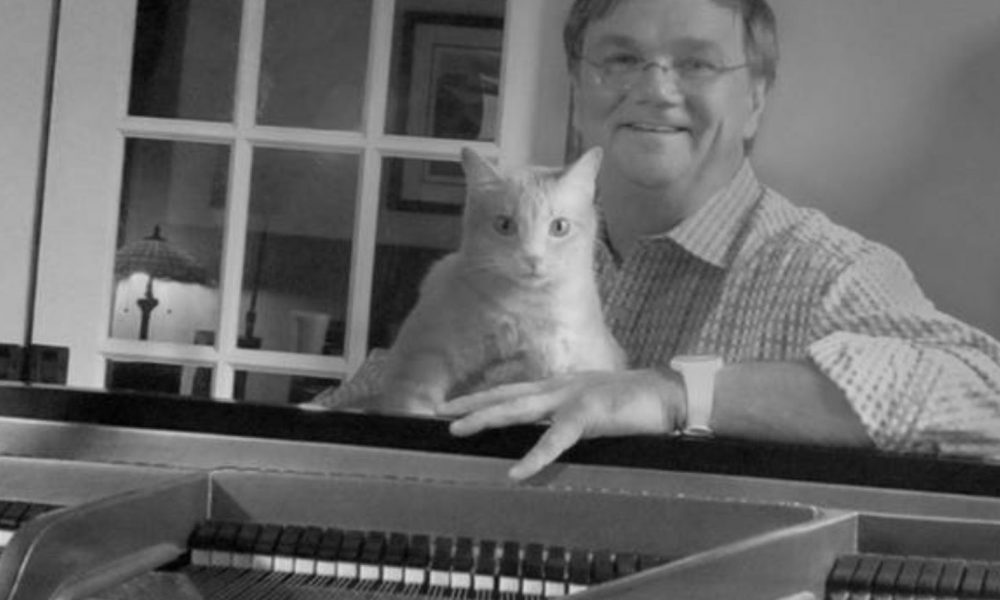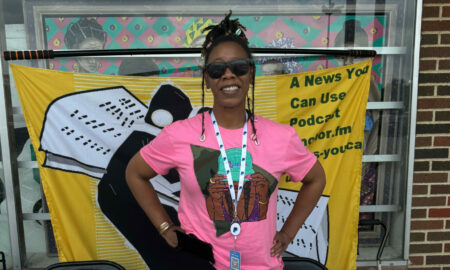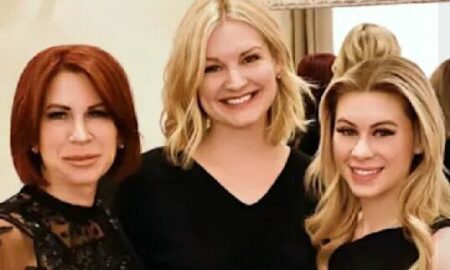

Today we’d like to introduce you to Kevin W. Sloan.
So, before we jump into specific questions about the business, why don’t you give us some details about you and your story.
It is an interesting and important time to be a city planner, landscape architect and a professor of architecture.
Never before in human history have cities existed at the scale of geographical regions. Their unprecedented form and colossal size are producing an unprecedented set of consequences to the environment, civilization and to the future of the planet.
My professional work and teaching is dedicated to developing new solutions, planning prototypes and landscape methods to make places that can humanize and transform a suburban mega city like the Dallas Fort Worth Metroplex, into a positive environment that is delightful, resilient and enduring.
A master in architecture degree from Syracuse University, including a fellowship in Florence Italy, fostered an awareness that architecture is much more than the design of individual’s buildings, but rather, the embodiment of principles for how to make new buildings, public spaces and parks that add to the cumulative life of a city.
The DFW Metroplex is a textbook demonstration of the issues and challenges of the suburban mega city. Upon completing my graduate work and two years of teaching architecture at Syracuse University, I deliberately selected DFW as a city that demonstrated the problems and, in addition, a culture open to change and new ideas. The discovery of seeing landscape as living fabric to heal and mend a diffuse suburban pattern like DFW has produced a set of built and award-winning projects that have revealed new possibilities.
The Dallas Urban Reserve knitted a modernist housing enclave into a community with a continuous bio-filtering street and the wild nature center-like landscape produced a new kind of common ground. The 112-acre mixed-use urban plan for Vitruvian Park in Addison, transformed the spring waters of an otherwise featureless ravine into a 17-acre public park that gathers high-density buildings to the nature it offers. The Airfield Falls Conservation Park in Fort Worth, Texas highlights the conservation of both water and history, the park design emphasizing ecological practices while also calling attention to the history of the site when it was part of Carswell Air Force Base.
After 15 years of use, the billion-dollar Sprint World Headquarters Campus in Kansas City has never had to buy one gallon of water to irrigate the seven garden quadrangles that organize twenty-one mixed-use office buildings. The perimeter of the site is planted with native Konza prairie grasses and forbs, long before this was being commonly discussed as a method to conserve water, and to clean storm water and improve air quality.
Where Florence and the great lessons of the Renaissance taught me that skillfully designed buildings form the cohesive fabric of a city, designing Urban Reserve and Sprint taught me that in America, landscape and nature can be seen in the same way. The cultural affinity for landscape values living along belts of trees, lakeshores, rivers, even golf courses. Nature can be the attraction to restructure cities in the 21st century and what is beginning to unfold in Dallas can be a useful metaphor for the world.
The Branch Waters Network™ is a concept to use the nature of the entire watershed network in DFW as an attraction and trademark to form and gather walkable mixed-use patterns that are sustainable. In spite of the recent examples of my work, this is not a “new” idea.
As the only realized part of the 1911 Dallas City Plan by George Kessler is the Turtle Creek corridor in Dallas, a one-hundred-year long demonstration that nature could form a high-rise cosmopolitan urbanism that included a rich and green brocade of lakes, waterfalls, recreational parks and public institutions, which now includes a Frank Lloyd Wright designed theater. Ingots of cultural and economic value flow from Turtle Creek.
At this point less than 3 % of the watershed system has been engage or enhanced in any way. Undergirded by a vast network of sheet springs, there is somewhere between 600 to 1000 miles of rivers, creeks, greenbelts, bayous and ravines that traverse the DFW metropolis.
Re-wilding is a new approach to landscape space that grew out of the thought project for the Branch Waters Network. It is an approach that marshals millions of acres of underutilized open space and the watershed network of the Branch Waters to form a return to nature project, reconstituting the original landscape of the Blackland Prairie and its attendant wetlands, as close to the original as it is practical.
Re-wilding acknowledges that historic cities like Rome, London, Paris and New York have always contained vermin that parasitically thrived from human activity. However, the contemporary American megacity is filled with wildlife and living ecologies. Bobcats, wild turkey, coyotes, foxes, waterfowl, migratory birds and raptors, are seen with such documented frequency that enthusiasts have formed clubs and websites to follow and appreciate them. As evidence, a recent film made by the Texas Parks and Wildlife coined the term “Bobcat City” to describe our home.
Letting nature take its course, especially along the vast watershed network, is safe, economical and, with time, can marshal the vast resource offered by the watershed, providing the opportunity for nature, civilization and nature to co-exist. As demonstrated by Vitruvian Park, a mixed-use development and city park that my firm designed in 2012, individuals can walk out of one side of their block into woods and prairie, and out the other side into a delightful and shaded network of streets and squares.
While there might not seem to be any logical connection between architecture and cultivating an entire watershed network to gather urban density, they are linked for me though my family.
I never knew my father’s father, but when I heard that he used to draft plans for his family’s “dream house” onto cardboard that he taped to the dining room table, I wanted to become an architect. My mother’s father was a farmer with a soul-deep connection to his piece of earth in southeastern Kansas that he passed onto his descendants. He once said seeing either a bobcat or a hummingbird constituted a bona fide religious experience.
Somehow I think they would have appreciated knowing their grandson became a professor of architecture, a landscape architect, a writer for the Dallas Morning News and an explicator on city-planning, sustainability and a new area of urban landscape thinking, called The Branch Waters Network and “Re-wilding” that is sweeping the globe.
We’re always bombarded by how great it is to pursue your passion, etc – but we’ve spoken with enough people to know that it’s not always easy. Overall, would you say things have been easy for you?
Everything seemed like a “push” in the beginning. Create good ideas and beneficial solutions, then “push” them onto audiences and clients with arguments and attempts at persuasion.
The realization that nature could be catalyst to attract denser urban formations along the Branch Waters Network, turned the “push” into a “pull” the potential to draw people to the nature of the Branch Waters and create density was already demonstrated by century-old examples such as Turtle Creek in Dallas, and White Rock Lake in the East Dallas, Lakewood area.
Heady theories and academic arguments about the benefits of city-living, suddenly gave way to simple and more intuitive messages such as “Go with the flow” for the Branch Waters Network. “Return to Nature” or “Let nature takes its course,” for Re-wilding.
There is something about nature that seems to make a largely suburban culture accept living in more knitted and walkable urban formations.
We’d love to hear more about your business.
Kevin Sloan Studio is a multi-disciplinary design practice in landscape architecture, city planning, building design, branding, environmental graphics and urban wayfinding systems.
As the author of a book about Water Conservation thirty years ago, we are also known for our extensive track record for making beautiful and indestructible places that do not need nor threaten the water supply.
While these are the professional disciplines our studio represents, the one thing we are known for is place-making. Place-making is objective. It is also the palliative to offset decades of cookie cut development that have left people bereft for meaningful places to live and enjoy.
We use design to transform what are otherwise, featureless areas and landscapes into magnets for people and economic activity. The places and social generators we make magnify cultural production and economic prosperity.
They also deliver for communities and cities, new trademarks and identities that go out into the world via referrals, the internet, Instagram and as the backdrop for countless selfies taken in places we’ve designed.
To reinforce the mission of our studio, we office in the storefront space of the historic Kessler Theater in North Oak Cliff. The Kessler Theater is culturally renowned for the live music acts it brings to Dallas and the urban energy it generates. It is also one of the only buildings in America named after a world famous landscape architect and city planner – George Kessler – that is also, coincidentally, two blocks from where my wife and business partner Diane and I live.
We “walk our talk” as an example to communities by living and officing in accord with the place-making ideas we advance.
What were you like growing up?
My interests were restless, broad, but related, even from the beginning.
Drawing, painting, making furniture and models went hand-in-hand with an early proclivity for music vis-a-vis the piano. It seemed like each activity provided a different way of looking at problems and creative activity, providing ways of re-seeing the others with new potential.
Piano recitals and intense competitions gave way to athletics when, during my early teen age years, a talent for track and field emerged that lead to a 1975 national championship in my event and specialty, the long jump.
Even today, many of my long jump records remain at the state high school and university level in the State of Kansas and at Kansas State University where I attended on a full athletic scholarship. The 1980 ban on the Olympics precipitated by the Russian invasion of Afghanistan, coincided with my final year of athletic eligibility.
Even though I had qualified for the Olympic Trials in Eugene, Oregon, I opted to retire and turn my energies to my long term interest in architecture.
While the family moved to Kansas City, the farm remains, offering valuable lessons in natural processes that shaped my youth. These lessons laid the groundwork for re-seeing the potential of sprawling mega cities like Dallas/Fort Worth as One Continuous Landscape.
Today my most cherished possession is a 1914 Steinway O, that was completely restored. Some nine to ten thousand pages of my sketchbooks are filled with drawings, measurements and analysis of the great buildings and places of the world.
Contact Info:
- Address: Kevin Sloan Studio
1218 North Davis Avenue
Dallas, Texas 75208 - Website: www.kevinsloanstudio.com
- Phone: 214.269.7650
- Email: ks@kevinsloanstudio.com
- Facebook: Kevin Sloan Studio
- Twitter: @kevinwsloan
- Other: VIMEO: Spaces and Places by Kevin Sloan Studio






 Image Credit:
Image Credit:
Vitruvian Park (Red Bridge) Photo, “Craig Blackmon FAIA”
Virtruvian Park Amphitheater – Photo courtesy UDR, Inc
Alpha Water Table – Photo courtesy UDR, Inc
All other photos – courtesy Kevin Sloan Studio, by Timothy Hursley…except the downtown Winspear Opera photo.
This photo – courtesy Kevin Sloan Studio
Getting in touch: VoyageDallas is built on recommendations from the community; it’s how we uncover hidden gems, so if you know someone who deserves recognition please let us know here.

















